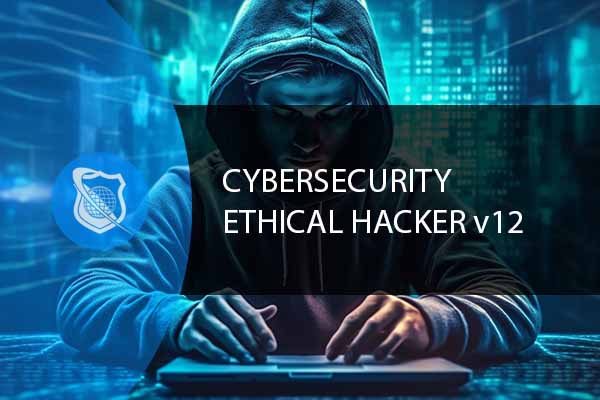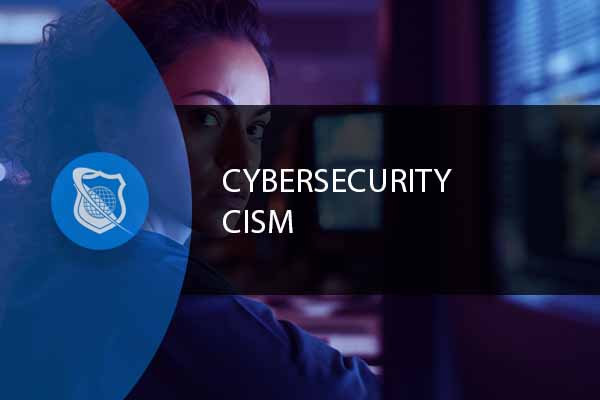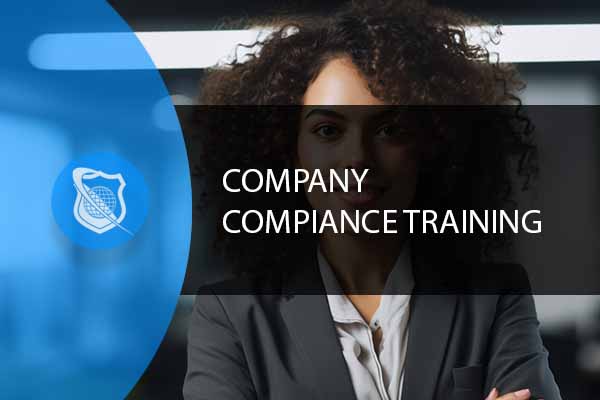Introduction
Governance, Risk, and Compliance (GRC) are the cornerstone elements of any robust information security management program. These three pillars are not just buzzwords but critical components that ensure the security and integrity of an organization’s data. For professionals aiming to earn or leverage a Certified Information Security Manager (CISM) certification, understanding GRC is imperative. This blog serves as a comprehensive guide to GRC as it relates to CISM and information security management.
CISM Training
Unlock your full potential in cybersecurity with our cutting-edge CISM training course! This isn’t just another certification; it’s a career game-changer. Designed for pros who’ve already aced Cisco and Microsoft exams like PenTest+ or CySA+, this course will arm you with advanced skills and the confidence to pass the CISM exam. Take the leap—enroll today!
Section 1: The Importance of GRC in Information Security Management
Understanding the role of Governance, Risk, and Compliance in information security is crucial for aligning security measures with business objectives. These elements serve as the backbone for creating a resilient and secure organizational environment.
Key Takeaways:
- GRC aligns information security with business objectives.
- Mastery of GRC is essential for effective information security management.
Section 2: Governance in CISM
Governance in the context of CISM involves creating policies and procedures that align an organization’s information security strategies with its objectives. It’s about setting the right framework and ensuring that the security measures are in line with the organization’s goals.
Core Concepts in Governance:
| Term | Description |
|---|---|
| Policy Framework | A set of policies that guide the organization’s security measures. |
| Strategic Alignment | Ensuring that security strategies align with business objectives. |
Example Policies for a Policy Framework:
- Data Encryption Policy: All sensitive data must be encrypted during transmission and storage.
- Access Control Policy: Only authorized personnel may access specific data sets.
- Incident Response Policy: Defines the steps to be taken in the event of a security breach.
- BYOD (Bring Your Own Device) Policy: Guidelines for using personal devices for work purposes.
- Compliance Policy: Ensures adherence to regulations like GDPR and HIPAA.
Examples of Strategic Alignment:
- Financial Sector: If an organization’s objective is to become a leader in online banking, the information security strategy might focus on enhancing secure transactions and fraud detection mechanisms.
- Healthcare Sector: For a hospital aiming to digitize patient records, the security strategy could focus on data encryption and compliance with HIPAA regulations.
- Retail Sector: For an e-commerce platform aiming for global expansion, the security strategy might include multi-factor authentication and compliance with various international data protection laws.
CISM certification equips professionals with the skills to develop and manage an effective governance framework, making them invaluable assets in any organization.
Section 3: Risk Management in CISM
Risk Management is about identifying and mitigating security risks that could jeopardize an organization’s data and operations. CISM professionals are trained to assess risks and implement strategies to mitigate them effectively.
Steps in Risk Management:
- Risk Identification
- Risk Assessment
- Risk Mitigation
- Monitoring and Review
Examples of Risk Management Strategies:
- Phishing Attack Mitigation: Implementing email filtering software and conducting employee training to recognize phishing attempts.
- Data Breach Prevention: Utilizing firewalls, intrusion detection systems, and regular security audits to prevent unauthorized access to sensitive data.
- Disaster Recovery Planning: Creating and regularly updating a disaster recovery plan that outlines the steps to be taken in case of a catastrophic event like a natural disaster or a major cyber-attack.
CISM certification ensures that you are well-equipped to handle these steps, making you an expert in information security risk management.
Section 4: Compliance in CISM
Compliance is the third pillar of GRC and focuses on adhering to regulatory standards like GDPR, HIPAA, and other industry-specific regulations. Non-compliance can result in hefty fines and reputational damage, making it a critical aspect of information security management.
Common Compliance Standards:
- GDPR (General Data Protection Regulation)
- HIPAA (Health Insurance Portability and Accountability Act)
- PCI DSS (Payment Card Industry Data Security Standard)
Examples of Compliance Measures:
- GDPR Compliance: Implementing data protection impact assessments and appointing a Data Protection Officer.
- HIPAA Compliance: Conducting regular audits to ensure the secure handling of patient information and providing training to staff on HIPAA regulations.
- PCI DSS Compliance: Implementing encryption for cardholder data and maintaining a secure network to protect transaction information.
CISM professionals are trained to ensure that an organization’s information security measures are compliant with these and other regulations, thereby minimizing legal risks.
Company Compliance Training
Whether training a few or hundreds of employees, we have an exceptional compinace training series covering OSHA, HIPPA and Sexual Harrassment. Track, monitor and document your employees’ required training.
Section 5: The Interplay Between Governance, Risk, and Compliance
Governance, Risk Management, and Compliance are interconnected facets of information security management. Mastery of these pillars enables a CISM-certified professional to create a holistic security program that not only protects an organization but also aligns with its business objectives.
The GRC Interplay:
- Governance sets the framework.
- Risk Management identifies and mitigates threats within that framework.
- Compliance ensures that the framework meets legal and regulatory standards.
Section 6: Preparing for GRC Questions in the CISM Exam
Understanding GRC is not just essential for real-world applications but also for acing the CISM exam. The exam includes questions that test your knowledge and understanding of governance, risk management, and compliance.
Exam Preparation Tips:
- Focus on real-world applications of GRC.
- Take practice exams that include GRC-related questions.
- Review ISACA’s study materials, which offer in-depth coverage of GRC.
Section 7: Real-world Applications of GRC in Information Security Management
In the real world, GRC comes into play in various scenarios, from setting up a new security policy to responding to a data breach. Understanding these pillars enables a CISM-certified professional to make informed decisions that protect the organization while aligning with its objectives.
Implementing GDPR Compliance in a Multinational Corporation
Steps to Implement GDPR Compliance:
- Conduct a Data Audit: Identify what kind of data you’re collecting and for what purpose.
- Appoint a Data Protection Officer (DPO): This person will oversee GDPR compliance within the organization.
- Update Privacy Policies: Make sure your privacy policies are transparent and GDPR-compliant.
- Implement Data Protection Measures: Use encryption and other security measures to protect data.
- Train Employees: Educate your staff on GDPR compliance requirements and best practices.
- Regular Monitoring and Audits: Continuously monitor data processing activities and conduct regular audits to ensure compliance.
Developing a Risk Management Strategy for a Financial Institution
Steps to Develop a Risk Management Strategy:
- Identify Potential Risks: List all the potential risks that could affect the financial institution.
- Assess the Risks: Evaluate the likelihood and impact of each risk.
- Develop Mitigation Plans: Create plans to mitigate the identified risks.
- Allocate Resources: Assign the necessary resources for risk mitigation.
- Implement Controls: Put in place controls to manage and mitigate risks.
- Monitor and Review: Regularly monitor the effectiveness of the risk management strategy and make adjustments as needed.

Cybersecurity Ethical Hacker
Ready to become an unstoppable force in cybersecurity? Our Certified Ethical Hacker V12 course is your gateway to mastering the art of ethical hacking. Dive deep into vulnerability analysis, target scanning, and stealthy network penetration. With hands-on activities and expert insights, you’ll learn to break into target networks, gather evidence, and exit without a trace. Don’t just learn to hack—learn to hack like a pro!
Conclusion
Governance, Risk, and Compliance are more than just industry jargon; they are the pillars upon which effective information security management stands. For professionals aiming to make the most of their CISM certification, mastering these aspects is non-negotiable. This blog has aimed to provide a comprehensive understanding of GRC in the context of CISM, equipping you with the knowledge you need to excel both in the exam and in the field.
Essential FAQs on Mastering GRC in Information Security Management from a CISM Perspective
What is GRC in the context of Information Security Management, and why is it critical from a CISM perspective?
GRC stands for Governance, Risk Management, and Compliance, three crucial components that form the backbone of effective information security management. From a Certified Information Security Manager (CISM) perspective, mastering GRC is vital because it ensures an organization’s information security strategies are aligned with its business objectives, risks are adequately identified and managed, and compliance with laws, regulations, and policies is maintained. This holistic approach not only protects an organization from various security threats but also supports its overall governance structure.
How can a professional implement effective Governance practices in Information Security Management as per CISM guidelines?
Implementing effective Governance practices in Information Security Management involves establishing a clear framework that defines policies, procedures, and standards for managing and protecting information assets. As per CISM guidelines, professionals should start by ensuring senior management’s commitment and involvement in setting information security strategies that align with the organization’s goals. This includes defining roles and responsibilities, fostering a culture of security awareness, and continuously monitoring and reviewing the governance framework to adapt to changing threats and business objectives.
What strategies are recommended for Risk Management in Information Security, and how do they tie into the CISM approach?
The CISM approach to Risk Management in Information Security emphasizes the identification, assessment, and prioritization of risks followed by the application of resources to minimize, control, or eliminate these risks. Strategies include conducting regular risk assessments, implementing risk mitigation controls, and establishing a risk management framework that is integrated with the organization’s overall risk management processes. This approach ensures that information security risks are managed proactively and in alignment with the organization’s risk appetite and business priorities.
How does Compliance fit into the GRC framework in Information Security Management, according to CISM principles?
Compliance in the GRC framework refers to adhering to laws, regulations, standards, and policies that apply to information security. According to CISM principles, compliance is not just about following rules but also about understanding the implications of these regulations on the organization’s information security posture. This involves regular compliance assessments, aligning information security policies with legal and regulatory requirements, and ensuring that employees are trained on compliance matters. Effective compliance management protects the organization from legal penalties, reputational damage, and financial losses while also reinforcing trust with customers, partners, and regulators.
Can you explain the importance of integrating GRC in Information Security Management for achieving business objectives?
Integrating GRC in Information Security Management is crucial for achieving business objectives because it ensures that information security practices are not only technically sound but also strategically aligned with the business’s goals and risk tolerance. It involves a balanced approach to managing information security risks, ensuring compliance with relevant laws and regulations, and governing the organization’s information security program to support business outcomes. This integration helps in making informed decisions, optimizing resource allocation, and enhancing operational efficiencies, thereby contributing to the organization’s success and resilience in the face of security challenges.
You may also like:
- CISM Exam: A Comprehensive Guide
- Why read this?: This blog post provides a comprehensive guide to the CISM exam, which can be beneficial for those who are planning to take the test. It complements the information in “Mastering the Pillars of GRC in Information Security Management: A CISM Perspective” by offering practical tips on exam preparation.
- CISM Certification: What You Need to Know
- Why read this?: This blog post focuses on the CISM certification, its requirements, and benefits. It can serve as a foundational read for those interested in becoming CISM certified, making it a great link to include for further reading.
- CISM Salary: What to Expect
- Why read this?: If you’re interested in the financial benefits of a CISM certification, this blog post is for you. It discusses the salary expectations for CISM certified professionals, which can be a motivating factor for many.
- CISM vs CISSP: Which is Right for You?
- Why read this?: This blog post compares CISM with CISSP, another popular certification in the information security field. It can help readers make an informed decision on which certification to pursue, making it a valuable resource to link to.


























